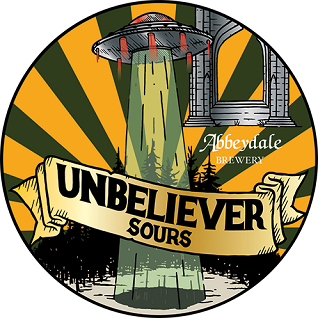
Brewing is full of surprises. Sometimes, things don’t quite go to plan. And sometimes, things go absolutely, totally and catastrophically wrong. One of the main challenges facing a brewer is what to do to correct things when they aren’t quite as expected… luckily, it can be one of the most fun parts too!
A couple of weeks ago, we were brewing our usual Wednesday Moonshine – 30 brewers’ barrels of the stuff, to be precise. We got mashed in, started to run off, and everything was ticking along nicely… until the steam boiler gave up.
Without steam we couldn’t bring our wort up to the boil. Boiling is an absolutely essential part of the brewing process – amongst other things, it sterilises and stabilises the wort, evaporates off unwanted volatiles that can lead to unpleasant aromas, and isomerises the hops which allows them to add their bitterness and temper malt sweetness.
And so we were faced with a decision. Pour almost 5000 litres of wort down the drain, take the hit on wasting a tonne of grain and be short of beer a couple of weeks down the line – or work together, pool our skills and make the best out of a bad situation. Ever the optimists, we chose the latter.
After relieving the local supermarket of literally all of their live yoghurt (containing souring agent lactobrevis), the wort was transferred to a fermenting vessel via the heat exchanger, bringing the temperature down from around 65°C to 41°C. At the same time, we purged with CO2 to reduce the oxygen content of the beer, to limit the risk of the development of butyric acid which gives off a distinct “baby sick” character – not exactly what we were aiming for! In addition to this we transferred with a small amount of lactic acid, which lowered the initial pH to around 4.5, and lactobacillus plantarum to work with the bacteria in the yoghurt to facilitate the souring process.
The following day, with the emergency engineer having tended to the boiler’s every need, we were back up and running and so were able to transfer the (now pH 3.3) wort back into kettle and boil it up to stop the souring process and ensure a sterile environment was retained. Having brewed a gooseberry saison the week before, with sturdier yeast than our house culture (which loses it’s appetite very rapidly at pH values of under 4), we were able to skim off some surplus to pitch into the new sour brew.
It’s worth noting that a year ago, we simply would not have had the knowledge to pull this off and would have had no choice but to throw the beer away. The fact that we were able to salvage this brew (despite having not used this method before, our previous sours being created in the kettle) and make something creative, delicious, and just the kind of beer we all want to drink, is testament to our brewers’ thirst for knowledge and development and the freedom we have here to experiment and have a go! (Although admittedly, we would generally not be encouraged to play around with quite this volume of beer!)
The result of all this? Unbeliever 3! Given that there’s rather a lot of this brew, we’ve taken the decision to split the batch into three to give us more opportunity to experiment with flavours – and our brewers have created some tasty combinations for you to pucker your face around!
Introducing…
Unbeliever 3.1 – a tropical sour with oodles of mango, passionfruit and pineapple.
Unbeliever 3.2 – dry hopped with Sorachi Ace.
And Unbeliever 3.3 – inspired by breakfast! With blueberries, oats and vanilla.
Coming soon – watch this space!




